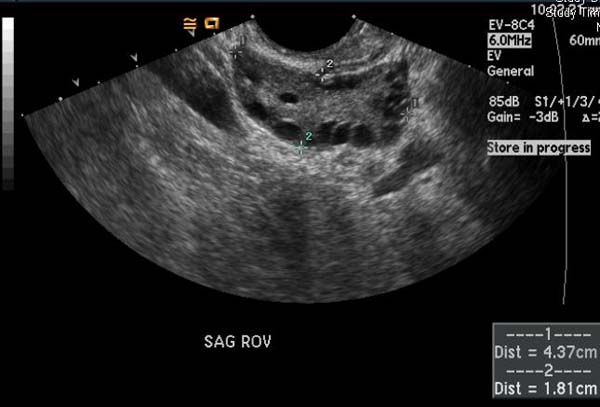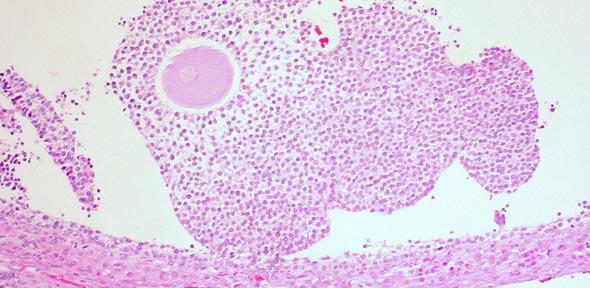Polycystic Ovary Syndrome, commonly abbreviated as PCOS, is a prevalent hormonal disorder that affects individuals with ovaries, particularly during their reproductive years. This condition can lead to a wide range of symptoms and complications, making it essential for those affected to understand its causes, manifestations, and treatment options. In this article, we will explore the intricacies of this condition, shedding light on what it entails, how it manifests, why it occurs, and how it can be managed effectively.

What is Polycystic Ovary Syndrome?
Polycystic Ovary Syndrome is a complex hormonal disorder that disrupts the normal functioning of the ovaries. The term “polycystic” refers to the presence of multiple small, fluid-filled sacs or cysts that form in the ovaries. These cysts are follicles that have not matured properly to release eggs during ovulation. As a result, individuals with this condition often experience irregular menstrual cycles and may face challenges related to fertility.
This syndrome does not merely affect the reproductive system. It also has systemic implications, contributing to metabolic issues, skin problems, and emotional health concerns. While the exact prevalence varies depending on diagnostic criteria, it is estimated that approximately 5 to 10 percent of women of reproductive age are affected by this condition globally.
Key Characteristics of the Condition
- Irregular or absent menstrual periods
- Elevated levels of male hormones (androgens)
- Presence of ovarian cysts visible through imaging tests
- Hormonal imbalances affecting various bodily functions
Symptoms of Polycystic Ovary Syndrome
The symptoms of this condition can vary significantly from person to person. Some individuals may experience mild symptoms, while others may face more severe manifestations. Below are some of the most common signs associated with this syndrome:
Irregular Menstrual Cycles
One of the hallmark symptoms is irregular or infrequent menstrual periods. Women with this condition may experience prolonged gaps between periods or extremely heavy bleeding when menstruation does occur. In some cases, periods may stop altogether.
Excessive Hair Growth
Increased levels of male hormones can lead to excessive hair growth, particularly on the face, chest, back, or buttocks. This condition, known as hirsutism, is one of the most visible signs and can significantly impact self-esteem and body image.
Acne and Oily Skin
Hormonal imbalances can also cause acne and excessively oily skin. These skin issues often persist beyond adolescence and can be challenging to manage with conventional treatments.
Weight Gain and Difficulty Losing Weight
Many individuals with this condition struggle with unexplained weight gain or find it difficult to lose weight despite efforts to maintain a healthy lifestyle. This is often linked to insulin resistance, a common feature of the condition.
Thinning Hair or Hair Loss
Some women may notice thinning hair on their scalp, similar to male-pattern baldness. This symptom is also attributed to elevated levels of male hormones.
Fertility Challenges
Due to irregular ovulation or anovulation (lack of ovulation), many individuals with this condition face difficulties conceiving. However, it is important to note that with proper treatment, conception is often possible.
Causes of Polycystic Ovary Syndrome
The exact cause of this condition remains unknown, but researchers believe that a combination of genetic, hormonal, and environmental factors contribute to its development. Understanding these underlying causes can help in managing the condition more effectively.
Genetic Predisposition
There is evidence to suggest that genetics play a significant role. Women with a family history of the condition are at a higher risk of developing it themselves. If a mother or sister has been diagnosed, the likelihood increases substantially.
Hormonal Imbalances
Hormonal imbalances are central to the development of this syndrome. Elevated levels of androgens, or male hormones, disrupt the normal function of the ovaries. Additionally, insulin resistance is commonly observed, leading to increased insulin production, which further exacerbates hormonal imbalances.
Insulin Resistance
Insulin is a hormone that regulates blood sugar levels. When the body becomes resistant to insulin, it produces more of this hormone to compensate. Excess insulin can stimulate the ovaries to produce more androgens, creating a vicious cycle that worsens the condition.
Inflammation
Chronic low-grade inflammation has also been linked to this syndrome. Inflammatory markers in the body may contribute to insulin resistance and hormonal disruptions, further complicating the condition.
Treatments for Polycystic Ovary Syndrome
While there is no cure for this condition, several treatment options are available to manage its symptoms and reduce the risk of long-term complications. Treatment plans are typically tailored to address specific symptoms and individual needs.
Lifestyle Modifications
One of the first lines of treatment involves adopting healthier lifestyle habits. These modifications can significantly improve symptoms and overall well-being.
Dietary Changes
A balanced diet rich in whole grains, lean proteins, fruits, and vegetables can help regulate blood sugar levels and promote weight loss. Reducing the intake of processed foods, refined sugars, and saturated fats is particularly beneficial.
Regular Exercise
Physical activity plays a crucial role in managing weight and improving insulin sensitivity. Even moderate exercise, such as brisk walking or cycling, can yield positive results.
Weight Management
For individuals who are overweight or obese, losing even a small percentage of body weight can restore regular menstrual cycles and improve fertility outcomes.
Medications
In addition to lifestyle changes, medications may be prescribed to address specific symptoms.
Hormonal Birth Control
Oral contraceptives containing estrogen and progestin can help regulate menstrual cycles, reduce androgen levels, and improve acne and excessive hair growth.
Anti-Androgen Medications
These medications block the effects of male hormones, reducing symptoms like hirsutism and acne. However, they must be used cautiously, especially in individuals planning to conceive.
Metformin
Metformin is a medication commonly used to treat type 2 diabetes. It can improve insulin sensitivity and may help regulate menstrual cycles and support weight loss efforts.
Fertility Treatments
For individuals struggling with infertility, fertility treatments such as ovulation-inducing medications may be recommended. Clomiphene citrate and letrozole are two commonly prescribed drugs that stimulate ovulation.
Procedures for Severe Cases
In rare cases where medications and lifestyle changes are insufficient, surgical interventions may be considered. Ovarian drilling, a minimally invasive procedure, involves using heat or laser to destroy parts of the ovaries that produce excess androgens.
Long-Term Health Implications
If left untreated, this condition can increase the risk of several long-term health issues. Awareness of these potential complications underscores the importance of early diagnosis and ongoing management.
Type 2 Diabetes
Insulin resistance associated with this syndrome significantly raises the risk of developing type 2 diabetes later in life. Regular monitoring of blood sugar levels is essential for prevention.
Cardiovascular Disease
Individuals with this condition often exhibit risk factors for heart disease, including high cholesterol levels, hypertension, and obesity. A heart-healthy lifestyle can mitigate these risks.
Endometrial Cancer
Irregular menstrual cycles can lead to a buildup of the uterine lining, increasing the risk of endometrial cancer. Hormonal treatments can help regulate the menstrual cycle and reduce this risk.
Mental Health Concerns
The emotional toll of living with this condition should not be underestimated. Anxiety, depression, and low self-esteem are common among affected individuals. Seeking psychological support can be invaluable.
Conclusion
Polycystic Ovary Syndrome is a multifaceted condition that requires a comprehensive approach to management. By understanding its symptoms, causes, and treatment options, individuals can take proactive steps toward improving their quality of life. Early intervention and consistent care are key to minimizing the impact of this syndrome and preventing long-term complications.





